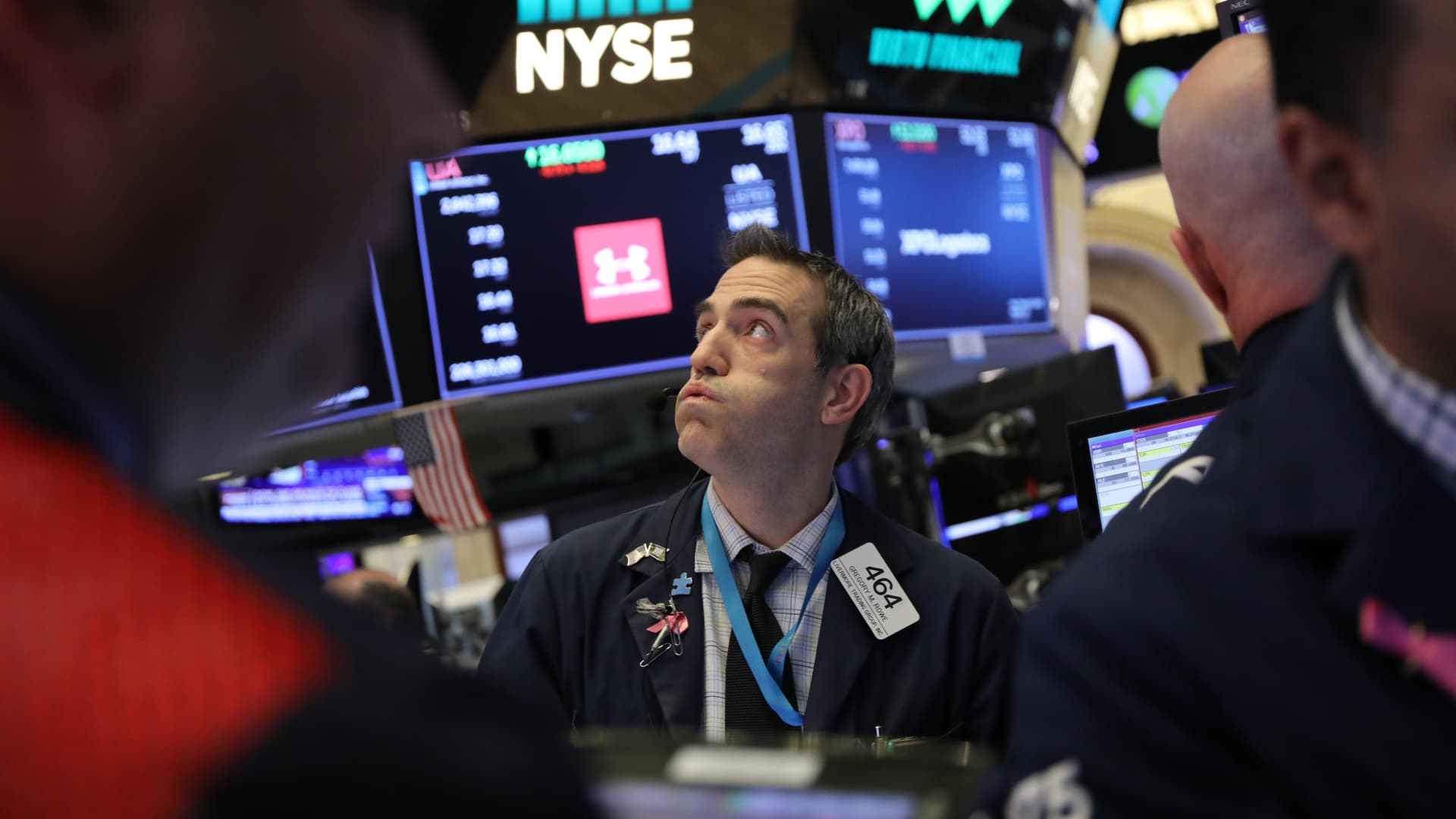Hits: 14

August and September are historically the worst months for stocks. That was the case this year, as the S&P 500 index fell 6.5% over that span.
Much of the time, however, the rest of the year can provide a respite, helping investors to recover losses. Don’t expect that to happen this time around.
This view is not based entirely on restrictive rates, political bickering in Washington, D.C., or a war breaking out in the Middle East — even as none of those things are helpful. It’s more about what some of the technical data is telling us.
Russell 2000, yield curve spark concerns
For one, the Russell 2000 has been battered since the end of July, having plunged more than 12%. The index is now in the red for the year, a stark contrast to the S&P 500, which remains up by double digits in 2023. (Even that index’s strength is deceiving. More on that later).
The Russell struggling can portend all sorts of bad things for the rest of the market. That’s because its components are small, capital-intensive firms that tend to rely on floating-rate debt to finance their operations.
That makes them ultra-sensitive to changes in interest-rate policy, which, combined with higher labor costs, helps to explain why it has slumped. Eventually, those issues tend to affect businesses of all sizes.
The other concern is the yield curve.
Yes, it’s been inverted for 15 months, and the economy has yet to descend into a recession, prompting some to theorize that this indicator is not the harbinger of doom it once was. But those arguments ignore that, historically, the period from when the yield curve first becomes inverted to when a recession-induced bear market occurs is typically about 19 to 24 months.
Take advantage of cheap stock entry points
This means that investors should plan for the likelihood that the worst is yet to come. Part of that process means keeping some powder dry to take advantage of cheap entry points to deep cyclical stocks sometime near the beginning of 2024.
Possible candidates include Dow, Inc. (NYSE: DOW) and LyondellBasell Industries (NYSE: LYB). Even as much of the market has done well this year, Dow is off by nearly 9%, while LyondellBasell is barely treading water. The rest of 2023 will likely get worse for deep cyclical stocks like this.
Both companies make high volumes of polyethylene. Notably, each enjoys a significant cost advantage over their global competitors in this area, relying on U.S. natural gas for production. The rest of the world uses crude oil, which is far more expensive.
In the past, a good entry point was when their dividend yields reached 6%. After that happened in 2020, Dow gained more than 34% over a four-month period, while LyondellBasell jumped nearly 38% during a roughly 10-month stretch.
Undoubtedly, the severity of the deep-seated technical issues mentioned above has been masked by the resiliency of the S&P 500. However, only a handful of companies have been responsible for the lion’s share of the index’s gains. Indeed, the Invesco S&P 500 Equal Weight ETF is down for the year — by a lot.
Even the recent spike could turn out to be a smokescreen.
On the surface, last week’s labor report supported the soft-landing argument, thanks to solid job gains and weaker-than-anticipated wage growth. But those are lagging indicators.
Bond and equity benchmarks are forward-looking and have, overall, been more bearish recently. If that trend continues, it will be difficult for stocks to hold their current levels until the end of the year.
The good news is that this cycle will end, and another will begin, possibly during the first quarter of 2024. That’s when we could see declines in headline consumer price index data and the potential for some accommodation from the Federal Reserve.
Investors will just have to be patient enough to wait for that time to come.
— By Andrew Graham, founder and managing partner of Jackson Square Capital.
Be the first to comment